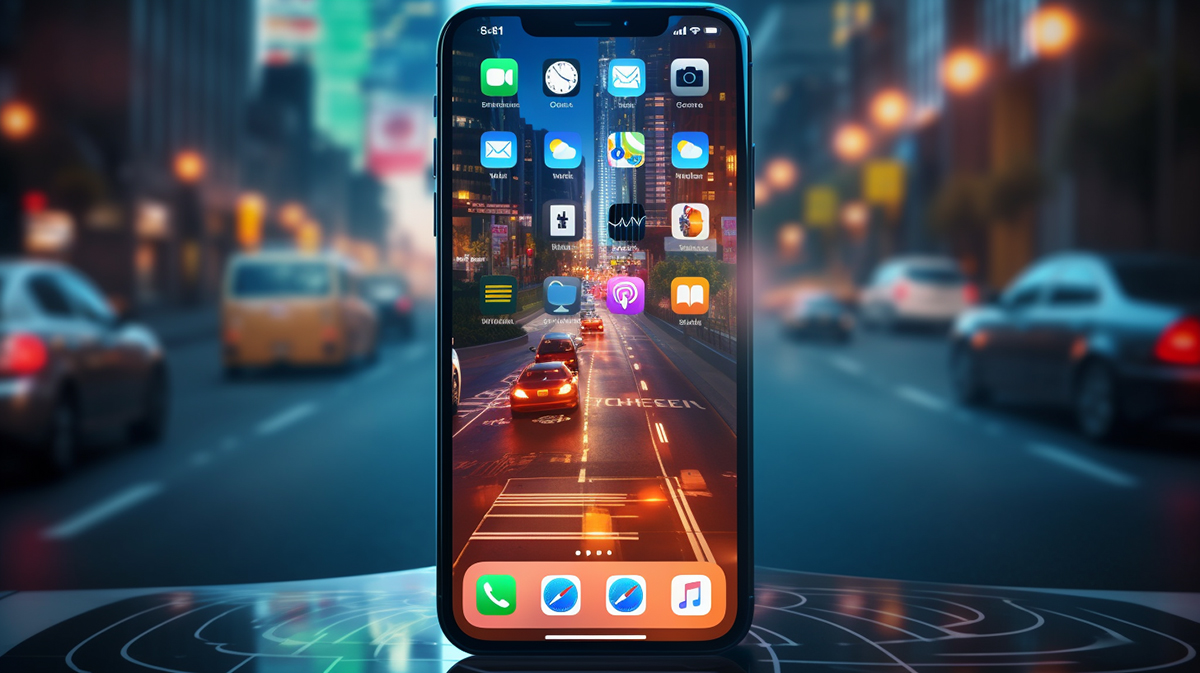Innovative App Revolutionizes Traffic Stop Safety

SafeStop, an avant-garde mobile application, is transforming traffic stop safety by enabling video calls between drivers and law enforcement.
The application, available on Apple and Samsung devices, aims to enhance interactions during traffic stops and prevent potential violence.
Despite concerns regarding privacy and officer bias, SafeStop endeavors to foster a safer, less stressful environment during traffic stops, thereby strengthening relationships between law enforcement and the public.
Key Takeaways
- SafeStop app allows drivers to have video calls with police during traffic stops, aiming to improve interactions between police and the public.
- The app shows the location and description of the user’s vehicle to the officer, enhancing safety and communication.
- The app is designed to be anonymous and protect users’ privacy, but privacy concerns have been raised by the Electronic Privacy Information Center.
- The overall goal of the app is to form better relationships between police and the public, making traffic stops safer and less stressful for everyone involved.
Understanding SafeStop App Features
Diving into the features of the SafeStop app, it offers a platform for drivers to initiate video calls with the nearest available police officer during traffic stops, enhancing safety and communication. The benefits of video communication during traffic stops are manifold, including increased transparency and accountability.
This tech-savvy solution provides immediate visual and auditory connection, reducing potential misunderstandings or miscommunications. Additionally, the app displays the user’s location and vehicle description to the officer, further ensuring accurate and efficient responses.
By fostering an environment of trust and transparency between police and the community, the SafeStop app aims to revolutionize the way traffic stops are handled, mitigating tension and promoting more positive interactions.
Thus, the SafeStop app is a significant step towards safer and more transparent law enforcement practices.
Implementing the Pilot Program
Following the app’s development, a pilot program was launched involving a dozen Los Angeles County sheriffs traffic deputies who were trained on using the SafeStop app during their shifts.
The results were promising. Each deputy was given a separate phone for using the app, granting them the discretion to use it according to the circumstances of each stop.
The pilot program success was measured not only by the increase in deputies’ confidence but also through a marked decrease in incidences of apprehension during traffic stops.
The sheriffs department, seeing the value in the app, has expressed interest in its future expansion.
As the SafeStop app continues to prove its efficacy, it is poised to revolutionize traffic stop safety on a broader scale.
Training Law Enforcement Officers
To ensure the effective use of the SafeStop app, it is essential to provide adequate training to law enforcement officers. This training process involves familiarizing them with the app’s features and demonstrating how to navigate its interface during traffic stops.
Evaluating officer feedback is a crucial part of this process, as their insights can identify areas of improvement, potential technical glitches, and the overall efficiency of the app. This feedback, coupled with assessing user experience, will provide a holistic understanding of the app’s performance and its impact on traffic stop interactions.
The data gathered from these assessments will be invaluable in refining the app and aligning it with the primary goal – enhancing safety during traffic stops.
Addressing Privacy and Potential Issues
Despite the potential benefits of the SafeStop app, significant privacy and potential issues must be addressed to ensure its successful implementation and adoption.
Privacy concerns and user anonymity are paramount among these. The app, while designed to be anonymous, must ensure robust privacy measures to prevent misuse of personal information.
Furthermore, the potential misuse of video call background by law enforcement officers poses a significant challenge. The backdrop of a user’s video call could inadvertently reveal sensitive information, potentially leading to unwarranted searches or profiling. Therefore, strict guidelines must be instituted to prevent such misuse.
Addressing these issues effectively requires a delicate balance between enhancing traffic stop safety and preserving user privacy, a necessity for the app’s widespread adoption.
Community Impact and App Goals
Aiming to bridge the gap between law enforcement and the public, the SafeStop app aspires to transform the often apprehensive nature of traffic stops into safer and less stressful interactions.
The importance of community engagement is central to its design, aiming to foster better relationships and trust.
The app leverages technology to improve police-civilian interactions, offering a two-way video communication platform that adds a layer of transparency to the proceedings.
The overall goal revolves around creating a universally beneficial tool to alleviate stress and potential conflict during stops.
However, to achieve the desired community impact, it will require the active participation of both law enforcement and civilians, underscoring the role of community engagement in leveraging technology for societal betterment.
Challenges and Controversies
While the SafeStop app promises to revolutionize traffic stop safety, it has not been without its share of controversies and challenges. One major concern is privacy, specifically the potential exposure of sensitive personal information. Critics argue that the app may inadvertently reveal private details, leading to privacy advocates like the Electronic Privacy Information Center voicing their concerns.
Another point of contention is officer discretion. The effectiveness of the app relies heavily on the officer’s decision to use it, which may vary depending on the conditions and circumstances of the stop. This raises questions about the app’s reliability and consistency in promoting safety during traffic stops.
Additionally, there is the issue of the potential misuse of background visuals during video calls. Critics worry that these visuals could be exploited to initiate unwarranted searches, undermining the app’s commitment to privacy norms.
Statistics and App Deployment Details
The SafeStop app, although not yet deployed for public use, has already been downloaded by over 1,000 users, demonstrating significant anticipation and interest in its potential to enhance safety during traffic stops. This robust user feedback and response is indicative of the public’s growing concerns about traffic stop safety, and their eagerness for tech-savvy solutions.
The app deployment progress is currently in the pilot phase, with a selected group of Los Angeles County sheriffs’ traffic deputies being trained to use it. The user base is expected to expand significantly once it is fully operational.
Through iterative feedback loops, the developers aim to continually refine the app’s functionality, ensuring it effectively addresses real-world traffic stop scenarios and meets the needs of both law enforcement and the public.
The SafeStop app, promising an innovative approach to traffic stop safety, presents potential for enhancing interactions between law enforcement and the public. If successful, this technological solution may significantly reduce traffic stop altercations, thereby improving overall community relations with law enforcement.
While concerns relating to privacy and officer bias require careful consideration, the app’s current popularity suggests growing interest in such safety measures. As SafeStop continues to evolve, its deployment will undoubtedly be of significant interest.



